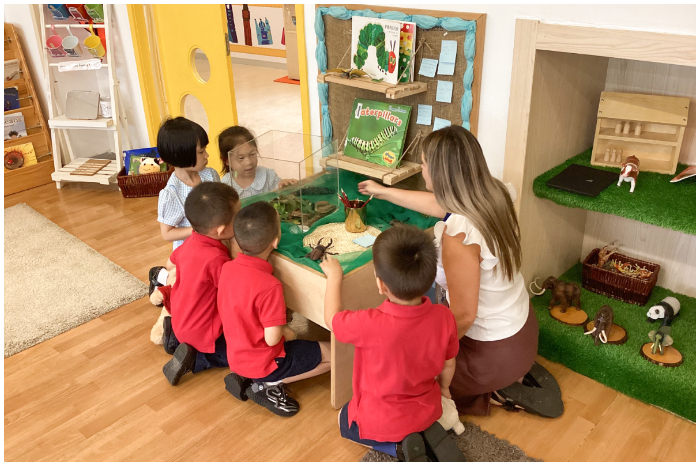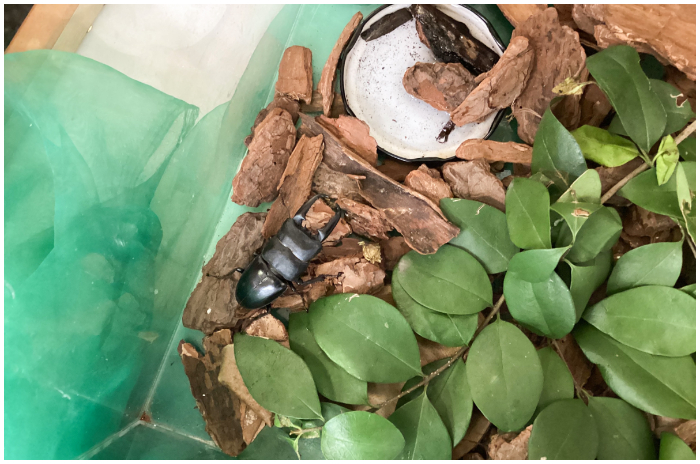Spotlight on Inquiry in Reception
As the new school year begins, the children are embracing a world of fascinating questions and discoveries about the natural world. Our focus has been on fostering an environment of curiosity, inquiry, and respect for nature.
One of the stories we've explored, 'Owl Babies,' led to a thoughtful discussion about the importance of protecting trees and forest lands, the homes of many animals, including owls. This story enlightened the children of the connection of all living things and their habitats.

Our natural world explorations were further enriched when we discovered two caterpillars and a massive stag beetle. Over the following four weeks, we observed the caterpillars' transformation into chrysalises and then butterflies. This process provided an excellent opportunity for the children to understand change and metamorphosis first-hand.

The giant stag beetle created much curiosity. The children identified it as a beetle but knew little else. They asked questions like, "Why does it have nippers?" and "What does it eat?" Some children noted its "hard shield on its back." These inquiries led our research into the life cycle of stag beetles, a process surprisingly similar to a butterfly's metamorphosis.

Through these observations, the children understood the vital roles insects play in the natural world. Butterflies, for example, are pollinators, helping flowering plants reproduce. Stag beetles contribute by breaking down dead wood and returning nutrients to the soil. These realisations led to a pivotal question: 'What is our role in protecting the natural environment?'
The children's initial ideas focused on protecting trees and forests, recognising the impact of deforestation on animal habitats. To understand this better, we watched a video showing how trees are cut down and used to make paper. The children acknowledged how much paper they use daily, sparking a conversation about reducing paper consumption in the classroom.

To put theory into practice, we set up a paper-making station in the classroom. Each day, children take on the responsibility of shredding used paper, creating a paper mulch, setting the mixture in trays, and leaving it to dry. As a result, we are creating recycled paper for classroom use, teaching the children about conservation and the power of individual action.
As we approach the second half of the term, the children are brimming with ideas on how to further protect our natural world. These include creating insect houses for bushy garden areas, planting flowering gardens to support butterflies and bees, and sharing our recycled paper-making process with other classes.
In embracing these ideas, the children are not only learning about the natural world but also adopting a proactive approach towards its protection. We're excited to see their continued growth and dedication towards protecting the environment and making a difference in the coming weeks.





